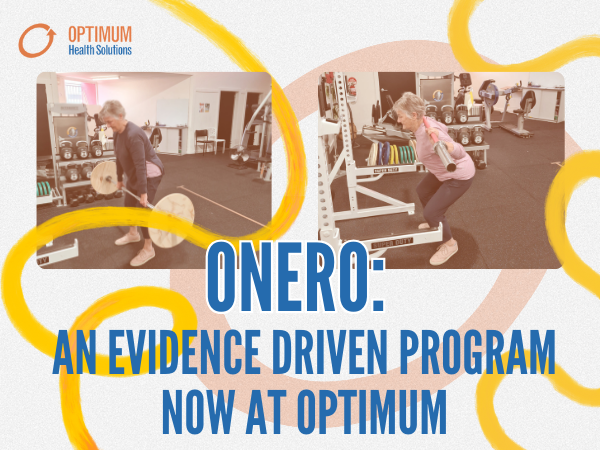– By Katie Gallagher, Physiotherapist at Optimum Health Solutions Sylvania
What is Parkinson’s disease?
Parkinson’s disease (PD) is a condition that affects the production of an important chemical in the brain called Dopamine which results in reduced motor control. It is a progressive condition (worsens over time) and it is classified as a Movement Disorder. PD typically affects people over 60 years of age.
What are the main symptoms of Parkinson’s disease?
- Tremor (trembling hands, arms, legs, jaw, and face)
- Rigidity (stiffness in the arms, legs and trunk)
- Slowness of movement
- Impaired balance and coordination
- Shuffled walking pattern
How will this affect someone with Parkinson’s disease?
As these symptoms progressively increase, patients may have difficulty walking, speaking, creating facial expressions or completing functional movements such as getting in and out of the bed, chair or car. These difficulties can result in decreased independence, reduced social life, reduced activity and overall reduced quality of life.
How can physiotherapy help?
Physiotherapists specialise in the structures and movements of the body so they are ideally placed to help those with PD to manage the effects the disease has on their body movement, therefore improving their quality of life.
Recent guidelines from the United Kingdom National Institute for Health and Clinical Excellence (NICE) and the Royal Dutch Society of Physical Therapy regarding the management of PD, support the inclusion of physiotherapy as part of ongoing symptom management.
The aim of physiotherapy in PD focuses on maintaining a person’s:
- Mobility (including strategies to reduce freezing gait)
- Balance
- Upper limb function
- Independence
- Activity level
- Posture
- Reducing falls risk
Physiotherapists can use many techniques to help reduce the symptoms of Parkinson’s disease. This may include:
- Strengthening exercises to keep the muscles of the arms, legs and trunk strong.
- Aerobic training to maintain cardiovascular fitness
- Visual cueing and mental cueing strategies to reduce gait freezing
- Music or dance therapy to improve the speed of movement
- Hydrotherapy
Although there is no cure for Parkinson’s disease, the effects it has on the body can be managed well with a combination of medical and physical therapy and it is possible to live a very good quality of life.
If you or someone you know has been diagnosed with Parkinson’s disease, speak to our team here at Optimum Health Solutions to find out more about how we can help you to continue living life to the fullest!
REFERENCES
1: Rizek, P., Kumar, N., & Jog, M. S. (2016). An update on the diagnosis and treatment of Parkinson disease. CMAJ : Canadian Medical Association journal = journal de l’Association medicale canadienne, 188(16), 1157–1165. doi:10.1503/cmaj.151179
2: Tomlinson CL, Herd CP et al. (2014) ‘Physiotherapy for Parkinson’s disease: a comparison of techniques’, Cochrane Database of Systematic Reviews, (16), pp. [Online]. Available at: https://doi.org/10.1002/14651858.CD002815.pub2 (Accessed: 24/01/2020).
3: Tomlinson C.L., Patel S. et al. (2012) ”, Physiotherapy intervention in Parkinson’s disease: systematic review and meta-analysis, 345(5004), pp. [Online]. Available at: doi: https://doi.org/10.1136/bmj.e5004 (Accessed: 24/01/2020).
4: Cosentino, C., Baccini M. et al. (2019) ‘Effectiveness of Physiotherapy on Freezing of Gait in Parkinson’s Disease: A Systematic Review and Meta‐Analyses’, Movement Disorders, , [Online]. Available at: https://doi.org/10.1002/mds.27936 (Accessed: 24/01/2020).








